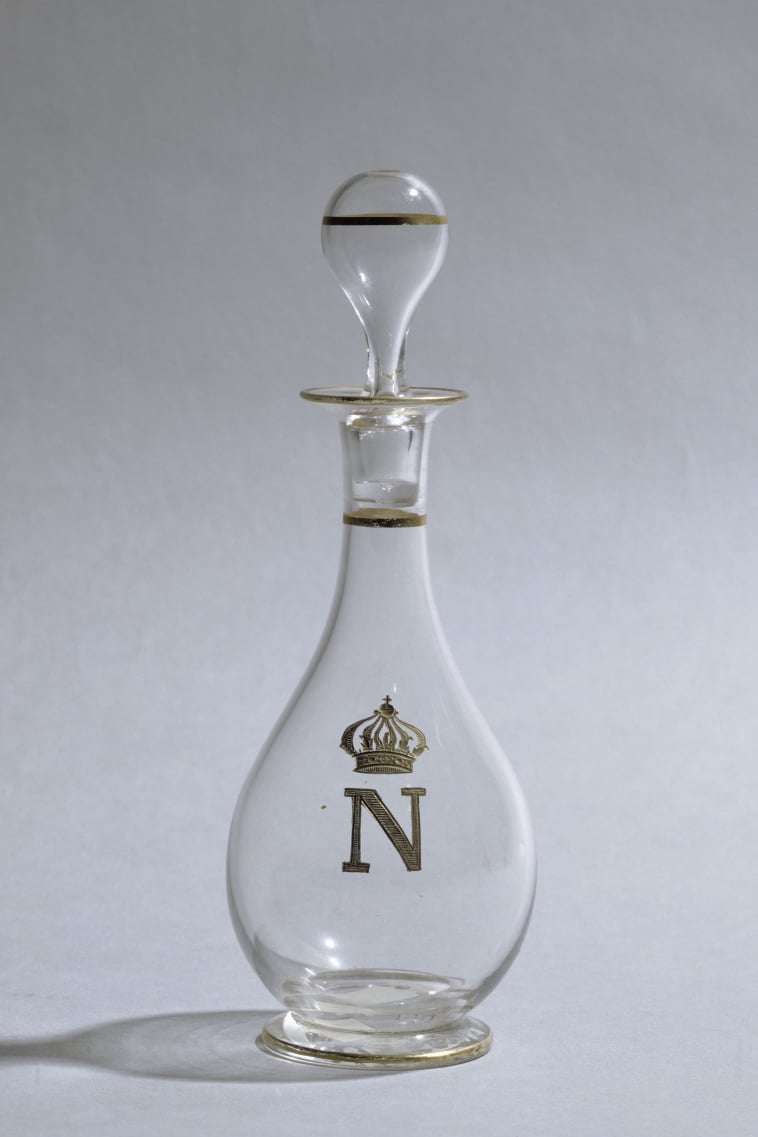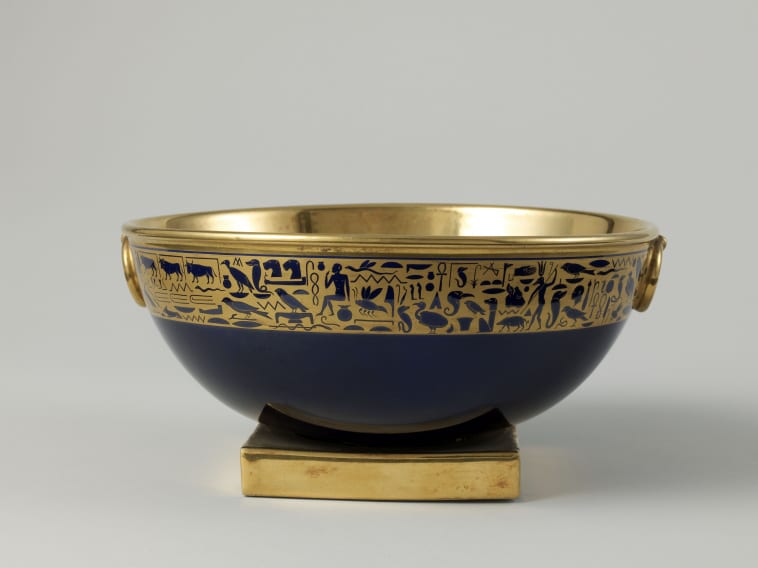After giving pride of place to gastronomy under the Empire and Napoleon Bonaparte's favorite dishes, let's take a look at what we drank at his table. Unsurprisingly, wine lovers will surely prefer Joséphine's eclectic and exotic tastes to Napoleonic frugality!
What was Napoleon Bonaparte drinking? We know that he is little concerned with good food and more sensitive to the simplicity of family or military gastronomy. If the man was no more fond of wine than of refined dishes, he nevertheless had his preferences. As for the guests at his table, they had no fear of dying of thirst: the Malmaison cellar concealed treasures carefully selected by Joséphine de Beauharnais.
Napoleon Bonaparte, a reasonable drinker
As a man of habit, Bonaparte almost always eats the same thing and drinks the same Burgundy wine every day, this Chambertin which he cuts with ice water. Constant (1778 – 1845), Napoleon’s valet from 1800 to 1814 reported this habit:
The Emperor drank only Chambertin and rarely pure.
The fact is confirmed by Mademoiselle Avrillion (1774 – 1853), Joséphine’s first maid. The ideal mixture of wine and water balances out half of one and half of the other. At the rate of a 50cl bottle for lunch and dinner, the bottles had to be kept ready in all the places frequented by Bonaparte. The habit began as soon as he was general since it was necessary to take cases of this Burgundy to Egypt. If the campaign was victorious for the future First Consul, it was disastrous for his bottles which hardly withstood temperature changes. Back then, sulfur was not a part of regular wine production, and unfortunately its absence often turned wine into vinegar.
Under usual conditions, however, we were already beginning to age the nectar using opaque glass bottles whose cork stoppering more securely preserved the integrity of the beverage. Usually, we served Napoleon Bonaparte and then Napoleon I – both maintaining perfect linearity in their habits – a 5 or 6 year old Chambertin which was supplied by the Maison Soupé et Pierrugues located at 338, rue Saint-Honoré in Paris. The merchants’ mission was to provide all the imperial residences and “on the battlefields, the sons of these gentlemen took turns following the Emperor”, testifies the valet Constant. The art of the table adopting the Russian service and abandoning the French one, the attention to the bottles was very different from the previous century and the wine was put in glass bottles manufactured in Sèvres and marked with the crowned N.
I cannot live without champagne, in case of victory I deserve it, in case of defeat I need it.
We lend this quote to Napoleon Bonaparte. And no doubt he said it. His taste for frugality is well established and champagne is one of the rare gastronomic pleasures that he truly appreciates. Proof of this is in the archives of the Moët house which keeps the accounting records of the orders placed by the famous Corsican. The very first is in the name of Napoleon Bonaparte, First Consul of Paris on the date of 27 Thermidor year 9 (August 15, 1801, the birthday of his 32 years!) then another passed in 1803. Once Bonaparte became Napoleon I, the orders were sent to the Emperor and his family. A few months before the Battle of Austerlitz, at the beginning of September 1805, an order from the Emperor was sent to Strasbourg and undoubtedly it was preparing without knowing it to celebrate a great moment in history. Joséphine and Jérôme Bonaparte also meet in the accounting records of the famous champagne house.
At the head of the latter, Jean-Rémy Moët, then mayor of Épernay, does not seem to have met the Emperor who came to his city only attracted by the fine bubbles. Napoleon I would have sympathized with this man who welcomed him to his home and who received, from the Emperor’s hand, the Legion of Honor.
Joséphine and the cellar of wonders of Malmaison
The inventory of Joséphine de Beauharnais’ cellar in 1814 reveals the extent of the refined taste of the owner of the Malmaison. More than 13,000 bottles are listed on the death of the former empress with prominently many sweet wines from vineyards ranging from Andalusia to Portugal, passing through the coasts of Languedoc, the islands of Madeira and the Canaries. These wines, appreciated for their sweetness, were served during afternoon snacks or for dessert at the many receptions and meals organized by Joséphine.
A major meeting place for the elite and those close to the imperial family, the reputation of the Malmaison table has stood the test of time. It is undoubtedly a must in the history of French gastronomy and tableware. Joséphine de Beauharnais, expertly advised by the best palates of the Empire (Cambacérès and Talleyrand in the first place), shone with a daring choice of prestigious wines and exotic alcohols, a memory of her native Martinique.
Bordeaux and Burgundy wines, champagnes, Côtes du Rhône and Rhin, Muscats from Lunel and Roussillon, vermouth, Italian and island liqueurs were regularly served at the table. Especially rum was a Creole eccentricity that delighted guests, especially when it was served as a punch, a drink already fashionable in the 18th century but which became essential under the Empire. Joséphine loved it, having it scrupulously prepared with the five essential ingredients then: tea, sugar, cinnamon, lemon and rum. Reason why the punch bowl was part of the… tea sets!
To please the ladies, the punch was served frozen. Some say that it is in Procope restaurant that it was drunk thus first because this very fresh punch attenuated the taste of alcohol and thus pleased more ladies. The story does not say if Josephine drank it like this at bedtime.
Because if the Empress was not a big consumer of alcoholic drink, she often drank, before sleeping, a small glass of punch. No wonder, because this beverage was credited with ensuring a smooth and peaceful sleep. There was nothing incongruous about the presence of a punch bowl in a bedroom at the start of the 19th century. Remember that those days are over, this is no longer the case today and that it would be the worst taste to replace your blanket with a bottle of rum, even if it was embellished with sugar and spices.
When Bonaparte was exiled to Saint Helena in 1815, his daily life was naturally upset. His Chambertin could not stand the trip and the English served him a claret that the fallen Emperor did not appreciate. Sometimes we see him working out a few negotiations to exchange a few bottles for Burgundy, without success.
A wine from the Constancia vineyard, the Grand Constance, which is still known today as “Napoleon’s wine” is brought from Cape Town for him. In 2016, a bottle of Grand Constance dated 1821 and intended for Bonaparte was sold for € 1,550. A fragile memory of the daily life of the last days of the Emperor.
Marielle Brie de Lagerac
Marielle Brie est historienne de l’art pour le marché de l’art et de l’antiquité et auteur du blog « Objets d’Art & d'Histoire ».




